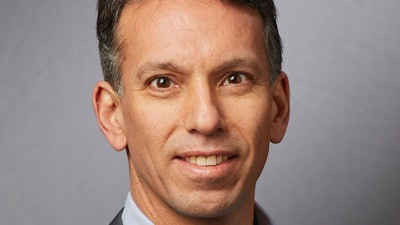
Dr. Eric Frazer, author of "The Psychology of Top Talent," is an expert in helping organizations hire the right people, avoid hiring the wrong ones and keep their top talent from leaving. Dr. Frazer has worked with Google, Cisco and Yale University, among others. Here are his six tips for hiring and keeping the best talent.
1. Standardize the hiring process.
Dr. Frazer says the No. 1 mistake he finds within organizations is that the hiring process is not consistent. “Don’t just wing it,” he advises. Identify what competencies matter to the organization and then assess, interview and recruit people using a standardized method. Even if your organization’s methodology is not 100% accurate, it is preferable than working off of hunches.
2. Look for specific characteristics.
Soft skills can be the best predictors of how well a candidate will do within an organization. When trying to determine if a certain characteristic is present, Dr. Frazer says to inquire about behavioral examples. Anyone can talk about having a particular attribute or form of emotional intelligence (e.g.“I get along well with others” or “I’m a hard worker”), but it is more difficult to demonstrate this if the candidate doesn’t have an authentic example.
Here are some of the top characteristics Dr. Frazer says to look for:
a. Grit: A persistence and commitment to long-term goals.
Ask: Tell me something you’re passionate about and how long you’ve been working on it.
b. Growth mindset: commitment to long-term continuous learning.
Ask: Tell me something you’re curious about and what you’ve learned.
c. Deliberate practice: consistent, deliberate engagement in the activity they want to be successful at.
Ask: What are you doing to get better at “x”?
3. Back up what you say with resources.
“We value our people.”
“We’re all about your personal and professional development.”
These sentiments sound great in the recruiting process. However, many new hires find the coaching, education or resources they need aren’t available or only available when they put in a certain amount of time. Make sure you have resources to match your organization’s core values.
4. Offer professional development resources.
There’s a visible trend in the data—more workers are demanding resources for professional and personal growth, and the companies that offer the greatest resources are going to be the most successful.
Progressive organizations have an abundance of learning resources, whether it’s on-demand webinars, videos, podcasts or a budget to attend conferences.
5. Make coaching and mentoring available.
Identify what your new hire’s interests and goals are and pair him/her up with a mentor in that particular area for him/her to develop those skills. During mentoring, new hires should receive objective feedback and a specific plan to get where they want to be.
6. Survey your current employee base.
Your organization’s executives may think they know what matters most to their employees, but Dr. Frazer’s research shows that most likely, they don’t. Survey your employees and take a deep look at what’s most important to them concerning professional and personal development. Use the responses to formulate a progressive strategy.















